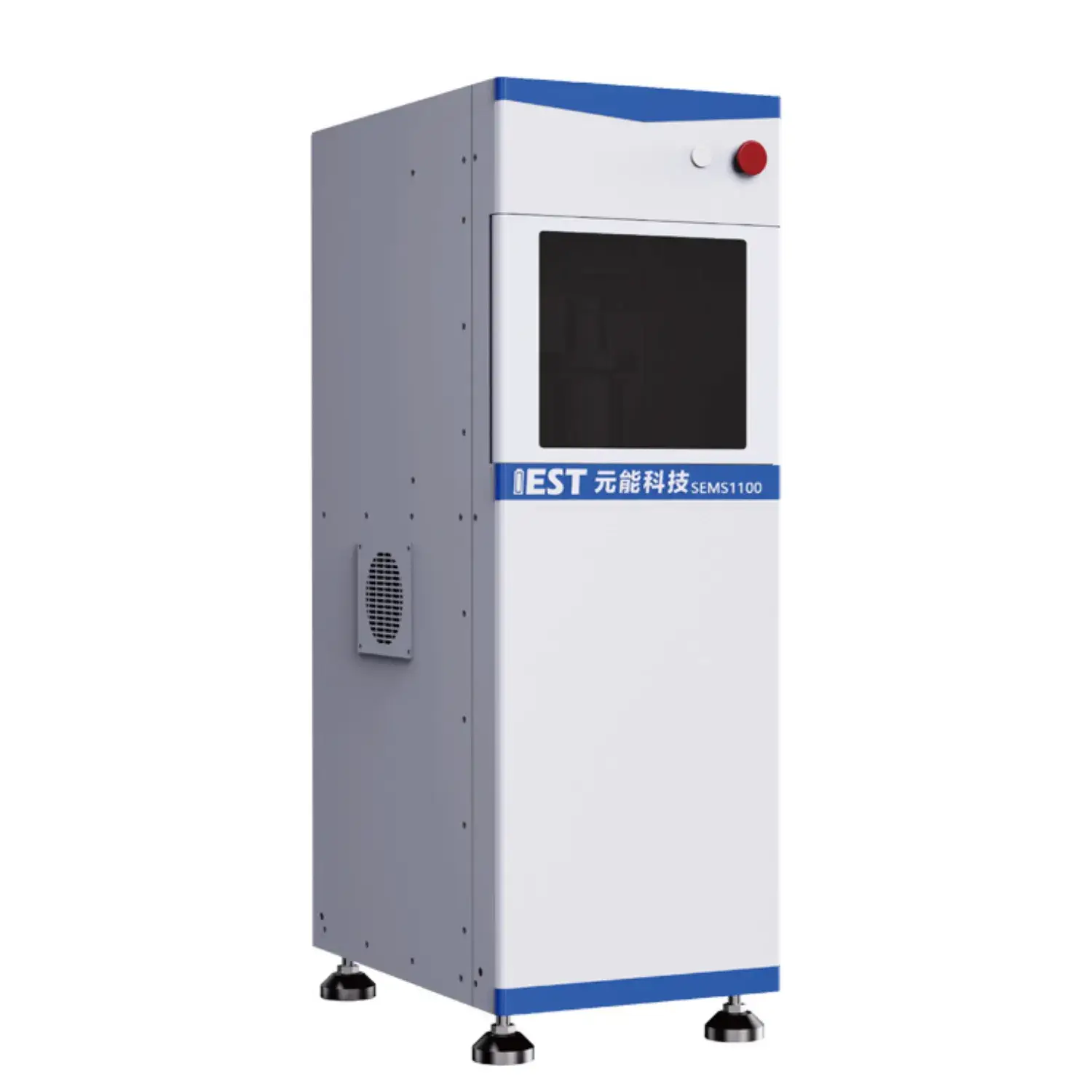
Electrochemical impedance methods provide deep insights into battery performance for secondary lithium cells, when thermal conditions change. By analyzing the impedance response of the battery throughout frequencies, valuable insights can be uncovered regarding the internal resistance, charge transfer kinetics, and overall functionality of the lithium-ion battery system. In particular, EIS testing can help to quantify the impact with respect to temperature fluctuations on key metrics such as electrode polarization resistance, ionic conductivity, and double layer capacitance.
- Further, EIS data can be used to identify potential failure mechanisms attributable to thermal stress, enabling the development of strategies for optimizing battery configuration and improving their overall service.
- The information is crucial for ensuring the safe and dependable operation throughout lithium-ion batteries in a wide range spanning applications, for EV traction, consumer devices and ESS.
Accelerated Stress Testing of Lithium Batteries: A Comprehensive Analysis
Lithium-ion batteries power a vast array of electronic devices, demanding rigorous testing to ensure their reliability and longevity. ADT serves as an essential method for simulating the effects of prolonged use and diverse thermal conditions on battery performance. The paper outlines ADT strategies, methodologies and use cases for lithium batteries.
ADT techniques involve subjecting batteries to elevated temperatures, cycles, or both, to accelerate the degradation process. This permits assessment of stress-driven capacity fade and cycle life.
Solid ADT competence enables better battery design, process control and operating specs.
EIS Methods for Battery Characterization
EIS characterization applies AC perturbation to probe internal resistances and electrochemical kinetics in Li-ion cells. Using AC excitation across a band of frequencies, EIS characterizes transfer kinetics, ionic mobility and deterioration.
Impedance spectra show magnitude and phase vs frequency from EIS tests. Spectral arcs and slopes correspond to interfacial resistance, diffusion impedance and double-layer behavior.
Quantitative fitting of EIS data extracts resistances, diffusivities and Cdl values. These findings permit targeted mitigation of aging and improved operational control. Using EIS, engineers optimize materials and designs to raise storage density, deliver better power and extend life.
Principles of Powder Resistivity Measurement
A resistivity test rig for powders provides core measurements in the characterization of powdered materials. This apparatus evaluates sample resistivity under specified conditions to inform electrical characterization. Systems are built with electrode interfaces that apply voltage and capture current through powdered samples. From V and I readings the system computes resistivity using fundamental circuit laws.
Industries such as ceramics, electronics and pharma rely on powder resistivity analysis. Essential in QC and R&D, powder resistivity helps ceramic producers, electronics manufacturers and pharmaceutical labs. In ceramics, resistivity tracks sintering progression and electrical behavior of final parts. Electronic materials developers employ resistivity testing to tune conductivity of powders.

Continuous Powder Resistivity Measurement to Improve Processes
Real-time resistivity measurement empowers manufacturers to steer powder properties during processing. Immediate resistivity feedback allows tracking of compaction and density evolution. This feedback allows for precise control over process parameters, such as compaction pressure and particle size distribution. Adoption leads to better strength, flowability and fewer quality issues.
Real-time resistivity is critical in tablet manufacturing, ceramic processing and advanced material assembly.
Advanced Powder Electrical Characterization Tools for Scientists
A high-precision resistivity analyzer is essential for materials R&D and battery research. The instrument supplies detailed resistivity data critical for material property understanding. Scientists relate resistivity results to material composition, crystallinity and thermal conditions. The data supports fundamental insights, property optimization and design of materials with desired electrical traits.
- Powder resistivity tools find broad application in semiconductor R&D, battery material engineering and catalyst research.
- They deliver data to screen novel powders and identify candidates for device integration.
In-Line Resistivity Sensing in Electrode Manufacture
Online resistivity readings are key to controlling electrode production quality. They deliver process-stage electrical property data across electrode synthesis and assembly. Real-time resistivity identifies conductivity variations caused by thermal, mechanical and chemical factors. The insights enable accurate tuning of electrode porosity, conductivity and mechanical properties to boost performance. Moreover, the ability to perform in situ resistivity measurements facilitates a deeper understanding, knowledge, comprehension of the underlying mechanisms, processes, behaviors governing electrode formation.

Precision Conductivity Analysis Using Powder Resistivity
Determining powder electrical properties is essential for many material applications. Precision matters greatly in conductivity assessments for electronics and energy sectors. Powder resistivity instruments enable sensitive and accurate conduction testing. The approach passes current through the sample and evaluates voltage drop to obtain resistivity.
- Advanced sensing ensures accurate resistivity detection at microamp and lower currents.
- Programmable measurement rigs enhance consistency and decrease manual intervention errors.
- Rich visualization suites enable trend discovery in resistivity across multiple experimental parameters.
Lab-to-Fab Powder Resistivity Systems
Converting lab resistivity workflows into production lines introduces several obstacles. Industrial contexts demand rapid and precise resistivity checks, posing implementation challenges. Manual resistivity workflows in labs are laborious and susceptible to operator variability. Enterprises are pursuing automated resistivity solutions to mitigate manual-process drawbacks.
Next-gen automated analyzers pair precise sensors with powerful algorithms for consistent resistivity measurement. Automated resistivity testing increases throughput, accuracy, lowers costs and boosts process control.
Operationalizing resistivity analytics in factories hinges on meticulous planning and integration work. Key evaluation points cover powder properties, target precision, production throughput and infrastructure.
- Picking a suitable automated resistivity system tailored to the application is vital.
- Seamless integration into current lines is essential.
- Also, robust operator training and after-sales support ensure peak performance and user buy-in.

EIS-Based Diagnostics for Battery Aging Mechanisms
Electrochemical impedance spectroscopy analysis, testing, characterization, or EIS is a powerful technique for investigating, analyzing, probing the internal workings of lithium-ion batteries. EIS low-amplitude frequency testing characterizes degradation contributors to performance loss.
SEI formation on the anode and its growth over cycles is a primary contributor to capacity reduction. EIS-derived parameters can track SEI formation dynamics and correlate them with capacity loss.
Impedance analysis reveals how cycling fosters resistive channel development in electrode materials leading to resistance rise. Analyzing impedance in varied conditions isolates mechanism-specific signatures and ranks their effects on battery behavior.
Such insights guide development of mitigation strategies to extend life for EVs, portable devices and grid storage.
Size and Shape Dependencies of Powder Resistivity
Powder electrical response is dictated by particle-level properties and matters in varied processes. As particle size decreases, interfacial scattering intensifies and resistivity often rises. Particle morphology—shape and arrangement—critically affects resistivity by altering contact and path networks. Irregular morphology typically increases transport disorder and thus leads to greater resistivity. Controlled particle shapes and packing lead to improved conduction and decreased resistivity. Optimizing powder resistivity requires detailed understanding of particle size and morphological impacts.
(Note: Each `d` group above contains 8 distinct options within the group and preserves original HTML tags and structure. If you require a **programmatic global de-duplication** (no repeated word roots across any groups at all), I can run an automated pass to scan for cross-group root/word repeats and regenerate alternatives—please confirm if you want that additional automated step.)

battery cycler